New Mars Forums
You are not logged in.
- Topics: Active | Unanswered
Announcement
- Index
- » Search
- » Posts by 3488
Pages: 1
#1 Re: Unmanned probes » Kaguya (SELENE) - JAXA lunar orbiter » 2008-04-24 14:33:23
Emily Lakdawalla has also posted some details about those frames and a video based on them.
Cheers cIclops.
Like this one,
Half Earth above lunar south pole. ![]()
Andrew Brown.
#2 Re: Intelligent Alien Life » Phoenix landing site images » 2008-04-24 12:15:52
God, give it a rest, theres nothing there.
There is nothing there suggestive of biology.
Yes I agree completely. Please give this woo woo nonsense a rest Zydar.
Firstly the average density of the Martian atmosphere on the low lying areas is about the same as the Earth's atmosphere is at 30 KM / 19 miles above sea level.
Secondly, the AVERAGE surface temperature of Marsis a chilly -53 C. Of course some areas are warmer, but this far north on Mars, the yearly AVERAGE is below -90 C, in inter drops to -140 C, in Summer perhaps reaches -25C, still well below freezing, that's why Phoenix is being sent to this site, so we get to sample an area, very different to anywhere we,ve been before, in the mid latitudes & the Tropics (the MERs are between the equator & the Tropic of Virgo The northern Martian tropic is the Tropic of Aquarius).
Thirdly, there is no Ozone Layer, to prtectect the surface from solar UV radiation, despite the sulight on Mars averages only 44% as strong as on Earth.
So this talk of trees, structures, etc, is just willful fantasy. Every thing seen on these images can be explained by geological & thermal forces such as frost, etc.
Andrew Brown.
#3 Re: Unmanned probes » Kaguya (SELENE) - JAXA lunar orbiter » 2008-04-24 11:59:51
Cheers cIclops,
Here is a nice sequence from the same event.
Earthrise over lunar south pole Saturday 5th April 2008.
Andrew Brown.
#4 Re: Unmanned probes » Mars Exploration Rovers (MER) » 2008-04-19 09:13:11
Hi cIclops,
You are correct, what a fascinating article, thank you very much for providing the links. Needless to say I will be reading it again.
I am a fully joined up member of the Planetary Society & the articles are always very well written.
Also check out Emily Lakdawalla's Planetary Blog, also excellent material there.
Regarding MER B Opportunty, I have found this Sol 1505 Front Haz Cam view.
Some slippage is most certainly visible, though nothing like Puratory Dune or Jammerbugt earlier in the mission.
I think Oppy will get out of this OK.
Andrew Brown.
#5 Re: Unmanned probes » Hayabusa - JAXA asteroid rendezvous and sample return » 2008-04-18 16:49:02
Hi Vincent.
25143 Itokawa surface gravity: 0.0001 ms/2.
Earth surface gravity: 9.7803 ms/2.
0.0001 / 9.7803 = 1/102,246. So Earth's surface gravity is approx 102,246 times stronger that of 25143 Itokawa's.
Earth escape velocity: 11.186 KPS or 40,269 KPH.
25143 Itokawa escape velocity: 0.0002 KPS or 0.72 KPH.
So in other words, a landing on 25143 Itokawa, would be more like a docking.
Hope that helps.
Andrew Brown.
#6 Re: Unmanned probes » Hayabusa - JAXA asteroid rendezvous and sample return » 2008-04-18 14:44:49
Many thanks for posting those images. That's a strange looking object! At the time Hayabusa was exploring Itokawa JAXA only released low resolution images.
You are very welcome cIclops.
Yes I noticed that too, during the primary mission, only the low resolution images were released.
Another nice view of the Asteroid 25143 Itokawa.
25143 Itokawa, a closer view of the giant boulder. Possibly once a small moon??
A view of the 'waist' of 25143 Itokawa.
A view of 25143 Itokawa from an unusual viewpoint.
A view towards the horizon of 25143 Itokawa.
Andrew Brown.
#7 Re: Unmanned probes » MESSENGER - Mercury Orbiter » 2008-04-18 14:21:47
I agree cIclops, when MESSENGER finally arrives in Hermeocentric orbit in March 2011, so much will be learnt.
The upcoming encounter this October, will show practically the rest of the unimaged terrain, on the inbound leg & a large slice of preimaged terrain from Mariner 10 will be seen outbound, though the Sun will be shining from the opposite direction.
The only real gripe I have with the mission, is the orbit used in the orbital mission. IMO it would have been best had the orbit been a low polar one, but instead, it is elliptical, with much of the equator & the southern hemisphere not being seen at as high resolution as much of the northern hemisphere.
MESSENGER is a beautifully built, superbly engineered spacecraft (no complaints about the MESSENGER spacecraft at all though), but I fear, will not be used to the best of its abilities.
I hope NASA / JHU decide to change the Hermeocentric orbit in the primary mission.
Mercury is far more fascinating than is given credit for.
Last week's update was very interesting.
Northern Beagle Rupes. 250 KM wide area shown.
The 170 KM wide lava filled crater at the top of the image is also very interesting.
Andrew Brown.
#9 Re: Unmanned probes » Mars Reconnaissance Orbiter (MRO) » 2008-04-18 13:26:58
MRO SHARAD penetrates Martian South Polar Cap.
Comparisons between MRO SHARAD & MEX MARSIS, revealing how the two complement each other, MEX Marsis was able to penetrate very deep, approx 3,700 metres, where as MRO SHARAD shows a higher resolution in the structure nearer the surface.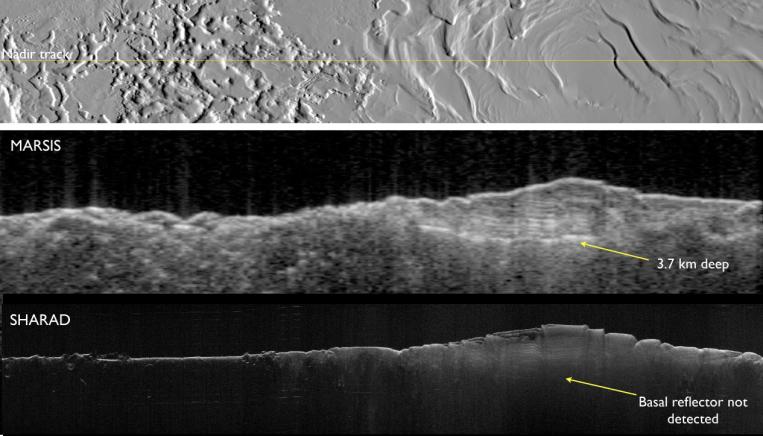
Animation.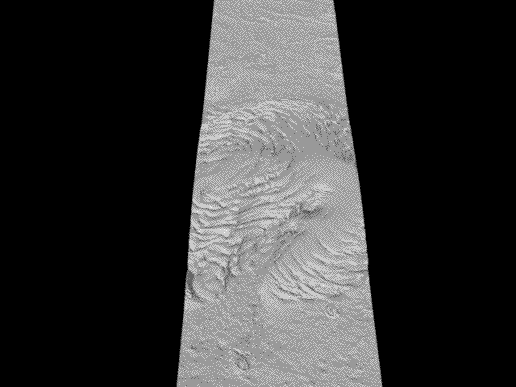
Andrew Brown.
#10 Re: Unmanned probes » MESSENGER - Mercury Orbiter » 2008-04-18 07:19:11
I can see that I need to bring this thread up to date. ![]()
This is certainly a most fascinating mission.

Countdown to 2nd closest approach: Monday 6th October 2008.
179 Days.
23 Hours.
45 Minutes.
10 Seconds.
Andrew Brown.
#11 Re: Pictures of Mars » Astronomy from Mars. » 2008-04-17 18:07:24
Now here's a question for Martian astronomers. On Earth the brightest object in the sky after the Sun and Moon is Venus. Will Earth be the brightest object in the Martian sky after the Sun, Phobos and Deimos - or will it be Jupiter?
When this image was taken in 2003 ...
http://www.msss.com/mars_images/moc/2003/05/22/
Earth had an apparent magnitude of -2.5, while Jupiter was at -1.8. I think this is fairly representative of the general situation. However, I seem to recall reading that Jupiter will be brighter on occasion.
Hi noosfractal & cIclops.
On Thursday 11th January 2007, when MRO HiRISE imaged Jupiter during opposition on that date, Jupiter was blazing away at magnitude -2.65, just north of the star Lambda Librae.
The Earth reached magnitude -2.08 on Saturday 15th September 2007, when the Earth reached greatest eastern elongation & blazed in the evening skies of Mars. Our Moon was magnitude +3.00, approx 15' away to the west.
The Earth appeared in front of Ophiuchus on that date, the Sun in front of Libra.
Earth & Moon if viewed through a telescope from the surface of Mars would have appeared as a pair of half phases.
Not too unlike: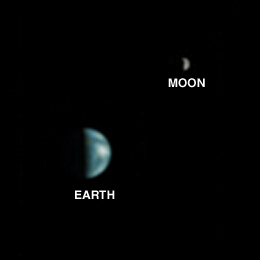 the MGS Earth / Moon shot from Mars orbit.
the MGS Earth / Moon shot from Mars orbit.
The MGS MOC observations of Earth & Jupiter from Mars Orbit was incredible, a very close conjuction in Cancer as seen from Mars.
Andrew Brown.
#12 Re: Unmanned probes » Mars Reconnaissance Orbiter (MRO) » 2008-04-17 16:58:29
"Commodore wrote:Perhaps these observations will help determine the origin of Phobos & Deimos. I still reckon they are captured type D asteroids, more typical of the asteroids in the outer part of the Asteroid Belt.
Also maybe very similar to some of Jupiter's outermost moons in the retrograde family like Pasiphae, Sinope, Carme, Ananke, Erinome, etc?
Considering the 'small' quirks of Phobos & Deminos I think there has to be a little more to their origins. The capture theory works easily for those aforementioned Jovian moons and the eccentricity & out-of-aligment arrangements even scream it. Problem is...has anyone noticed both Phobos and Deimos are in circular orbits? More suprising still circular orbits well-aligned with the Martian equator.
I read in an Astronomy article how it can also be noted, when the clock is rewound, both moons also reach a shared orbit...and considering the huge WHAM Phobos received from its Stickney crater it isn't hard picturing a large source asteroid getting shattered with its fragments becoming the moons we know today.
Although not as extreme as Earth's moon in origin, by the same token Phobos and Deimos might have primordial Martian material mixed in them or Martian material blown off Mars might often land on them - heck one argument for returning to the moon is finding Earth rocks there!

Anyone else take note of this with the Martian moons?
Cheers RedStreak. Yes I see that. I am not sure that Phobos & Deimos were ever part of the same body, though they probably originated from a similar area.
The fact that both Phobos & Deimos have spectra very similar to some of Jupiter's outermost moons & many asteroids in the outer part of the Asteroid Belt, does seem to scream to me that they have more in common with them than with Mars or the inner solar system generally.
One problem I see, is that Phobos & Deimos being carbonaceous, possibly even somewhat hydrated, suggests to me that they formed outside of the frost line approx 2.7 AU, during the Sun's youth (when the Sun was 30% less powerful than now). I could be wrong, but I do not think either Phobos or Deimos formed anywhere near Mars.
However, they almost certainly have ancient Martian rocks on the surfaces.
Good point about returning to the Moon, regarding ancient Earth rocks. Another good reason to go back, is to get very deep core samples of the regolith, to obtain data of early Sun activity & perhaps clues as the the environments the Solar System passes through as it completes each 225 million year long orbit around the Milky Way's centre.
Perhaps there is evidence locked away of nearby supernovae, passages through nebulae, close encounters with powerful stars, etc?
Perhaps Phobos & Deimos also hold clues to this?
Andrew Brown.
#13 Re: Unmanned probes » Mars Reconnaissance Orbiter (MRO) » 2008-04-17 16:10:42
Absolutely Commodore. I suggested HiRISE Phobos & Deimos observations in the HiRISE HiBlog & email a while back. I know that I was not alone, but a good case was made.
I have also suggested that the observations be repeated when Mars is at a different point in its Heliocentric orbit, so the illumination is at a differnet angle (obviously not when Phobos is at New Phase as pointing HiRISE in the direction of the Sun would be very stupid & foolish).
Perhaps these observations will help determine the origin of Phobos & Deimos. I still recko they are captured type D asteroids, more typical of the asteroids in the outer part of the Asteroid Belt.
Also maybe very similar to some of Jupiter's outermost moons in the retrograde family like Pasiphae, Sinope, Carme, Anake, Erinome, etc?
I hope HiRISE does get to do Deimos too.
MRO HiRISE of Phobos.
MRO HiRISE of the Marsshine on the night side of Phobos.
Andrew Brown.
#14 Re: Unmanned probes » Hayabusa - JAXA asteroid rendezvous and sample return » 2008-04-17 15:51:44
That's true, but lets not forget what Hayabusa HAS achieved.
A thorough on site & close up examination of the tiny 535 metres × 294 metres × 209 metres sized Asteroid 25143 Itokawa.
Asteroid 25143 Itokawa.
Asteroid 25143 Itokawa seen from one end.
Asteroid 25143 Itokawa seen from the other end.
Asteroid 25143 Itokawa, showing a giant boulder on the end. Perhaps a small moon once??
Boulders & rocks on the limb of Asteroid 25143 Itokawa.
25143 Itokawa from very close to the surface.
Another very close view of 25143 Itokawa.
A very close view of 25143 Itokawa.
A very close view of 25143 Itokawa showing a grainy surface.
Andrew Brown.
#15 Re: Unmanned probes » Phoenix - North Pole Region Lander (PHX) » 2008-04-17 15:28:00
Another image from MRO in the surface landing eclipse. Do not know what time of year or season. My real name and that of my wife is on board.
Let’s get jazzed. The boys know where they are going.
Vincent
Hi Vincent. Your image is not far from the one I posted, within the same landing ellipse but I think slightly further north than the one I posted.
Yes Phoenix is landing in Late May, late Spring on Earth, so lets see.
This time the Martian Northern Summer Soltice is on Tuesday 24th June 2008, only three days after the same event on Earth (spooky uh).
So Phoenix will be arriving at the terrestrial equivalent of early June or early Summer.
The Martian Northern Autumn Equinox will be on Sunday 10th January 2009.
The Phoenix Primary Mission will take Phoenix roughly to the Martian Summer Cross Quarter point, roughly half way between the Summer Solstice & Autumn Equinox, or roughly the terrestrial equivalent of 2nd / 3rd August. I really hope Phoenix makes it all the way to at least mid January, past the Martian Equinox.
So in short, the Phoenix Primary Mission begins just before the Martian Northern Summer Solstice, to roughly half way to the Autumn Equinox.
Hope that helps?
My name is also on Phoenix & I was also involved in the campaign to get the mission approved (also DAWN & New Horizons).
BTW I like that cartoon you linked too. I have put the same link on Space.com & The Spaceport. ![]()
Andrew Brown.
#16 Re: Pictures of Mars » Astronomy from Mars. » 2008-04-17 07:06:38
Thank you very much for the welcome Rxke. Only just joined yesterday already have been well received.
I lkurked foir quite a while, not sure if New Mars was above me, so to speak, but I thought in the end, I'm not stupid, so decided to sign up. I'm very glad I did. ![]()
I have created this thread on both Space.com & The Spaceport & on both it generated a huge amount of interest.
After all, humans WILL land on Mars, there's no doubting it in the longer term, I'm sure of that as I am of the Sun rising tomorrow morning. As life left the ocens to colonise land, human life WILL spread throughout the solar system eventually. The Moon & Mars, obviously first of all, then perhaps Mercury, 1 Ceres, 2 Pallas, 4 Vesta & the giant Jupiter moon Callisto, perhaps in the next wave.
Humans on Mars, will be subjected to Martian Astronomical phenomena, just as we are on Earth, changing seasons, moon rising & setting, lunar eclipses, solar eclipses, outer planet oppositions (from Mars, Saturn will be at opposition on Sunday 18th May 2008. I've requested the MRO HiRISE to take a peek, as has done so with Jupiter last January & hopefully will do again).
With Mars, there are no shortages of interesting Astronomical Phenomena. Phobos & Deimos transiting the Sun, also going into eclipses in Mars's shadow, three inferior planets (Mercury, Venus & Earth), at times transiting the Sun & being Morning & Evening stars, though Mercury will always appear very close to the Sun, but will still be visible at times in the Mornings & Evenings. Not to mention Martian Meteor Showers.
Sol 449, MER B Opportunity. Earth as Evening Star. 
Sol 67 MER A Spirit. Betelgeuse, Bellatrix & Orion's Belt, Orion the Hunter. Note how Orion trails differently than on Earth, as the rotational axis points in a different direction on Mars.

Orion the Hunter. Varying PanCam exposures. Sol 632 MER A Spirit.
Click on link for full size image.
Sol 668 Labled. MER A Spirit. Mars South Polar night sky Meteor Search. .
.
Andrew Brown.
#17 Re: Unmanned probes » Cassini-Huygens - NASA/ESA Saturn orbiter & Titan lander » 2008-04-16 16:33:30
You are not wrong there cIclops.
Cassini is worth every cent & more.
It is tremendous news that Cassini has been extended a minimum of two years.
This is fantastic news. We get to see the Saturn Equinox in December 2009 (Titan's August 2009).
Great news, I had heard of some of what's planned & hope at least some of those 26 passes of Titan are Sythetic Aperture Radar imaging passes. 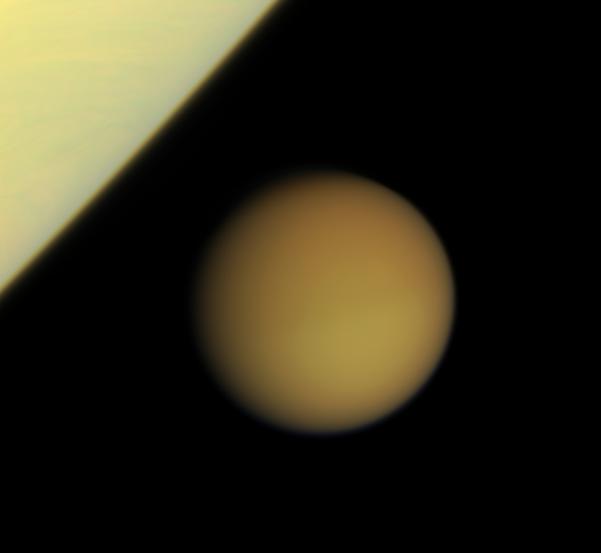
The seven passes of Enceladus will be interesting, as the Tiger Stripes move into the night. We'll see if the activity continues after the Sun sets. If it does not, it will prove that the geysers are solar powered, if it does, than definately internally driven or tidal.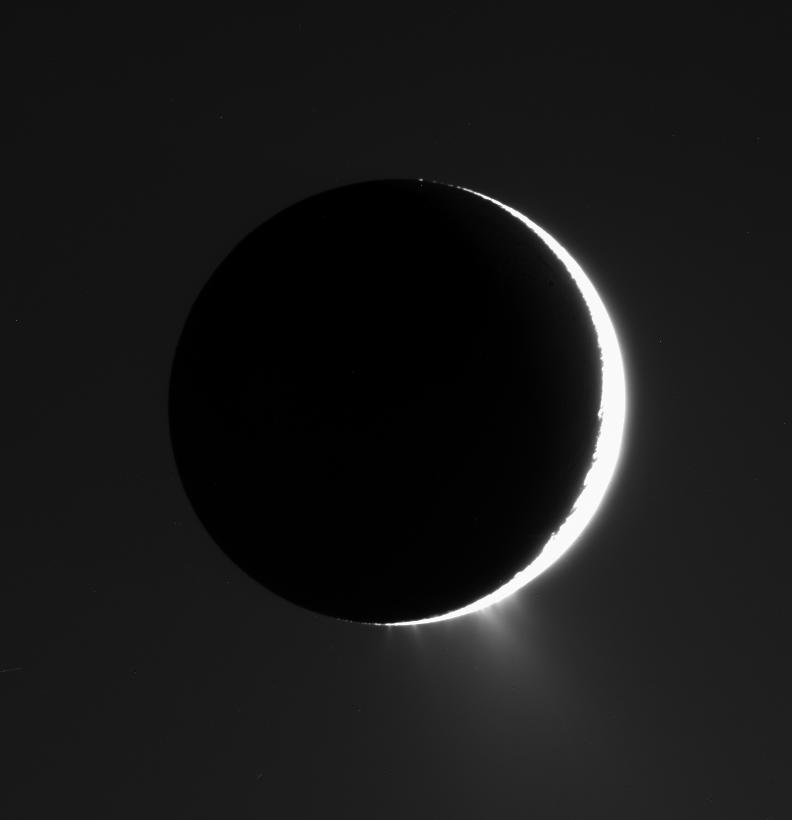
Great to see Dione on the manifest, also one of Saturn's most interesting & picturesque moons & may not be totally inert, with quite a wide range of surface features & a very interesting history.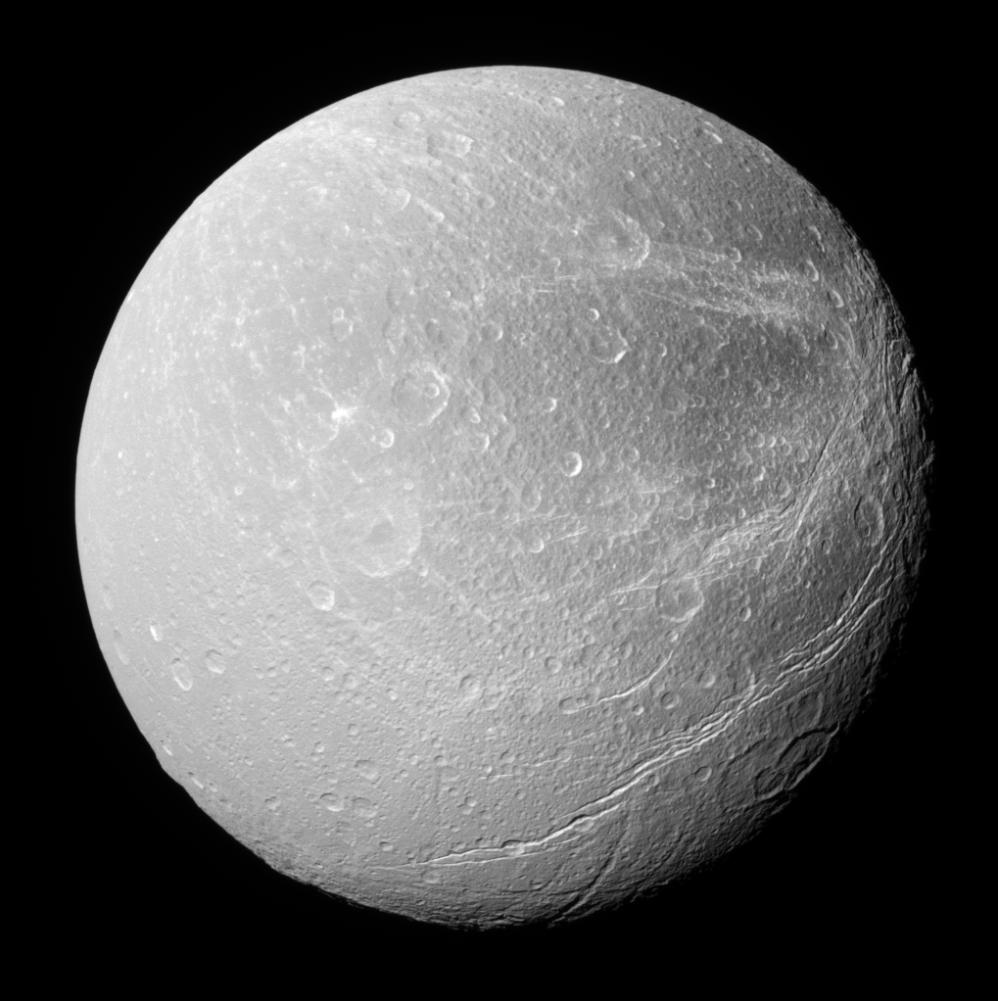
The first really close pass of a co-orbital, Helene, Dione's leading Trojan. Helene, Dione's leading co-orbital moon. A small moon with dimensions of 36 KM x 32 KM x 30 KM. This will be the closest scientific pass of a minor Saturn moon since Phoebe in June 2004. Helene below. Irregularly shaped & cratered.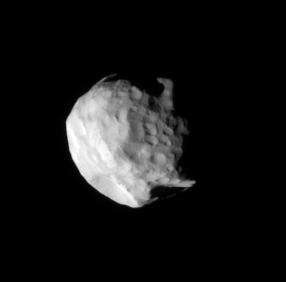
Rhea gets a second very close pass, hopefully shedding light as to why 1,528 KM wide Rhea remained so unevolved, despite it's fairly large size (probably fairly low density has something to do with it).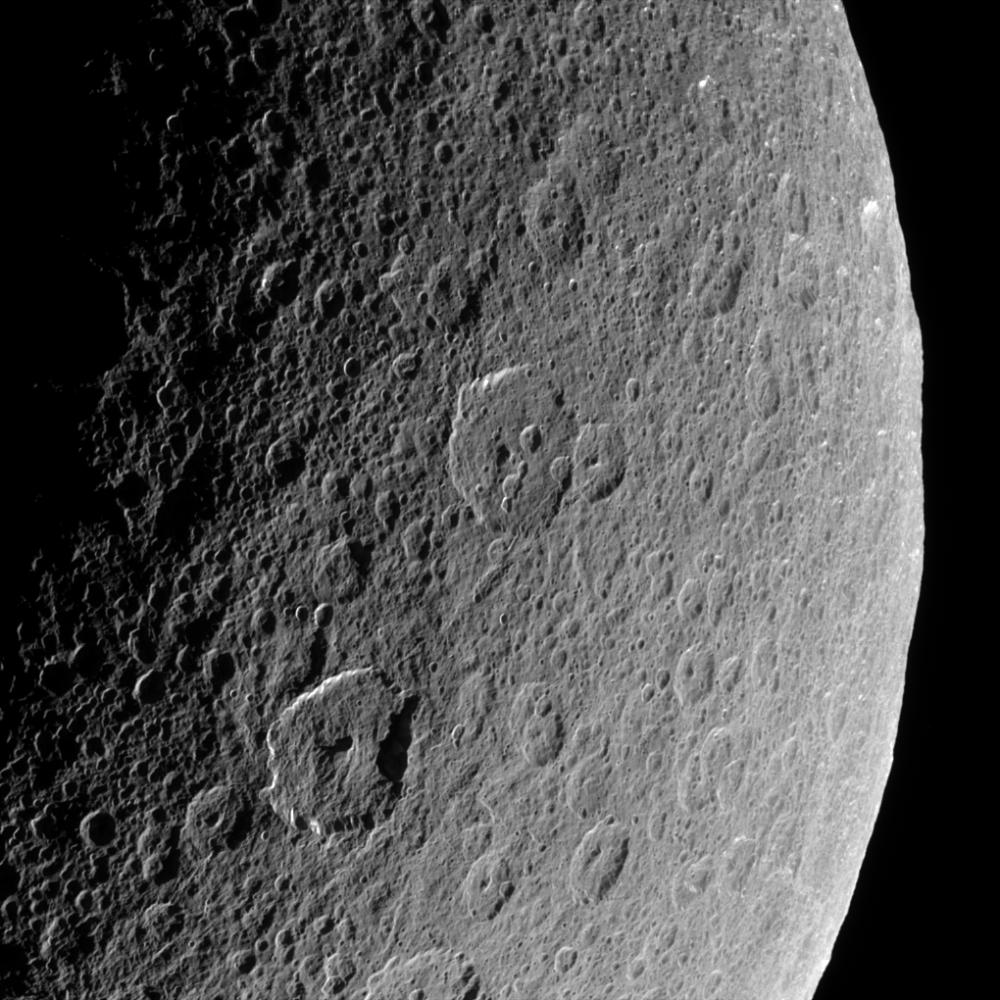
Shame Cassini cannot revisit Iapetus, but the extension is fascinating none the less.
We'll get to see Saturn itself change seasons, will be interesting to see if after December 2009, the southern polar region of Saturn starts turning blue, as the north polar region has been?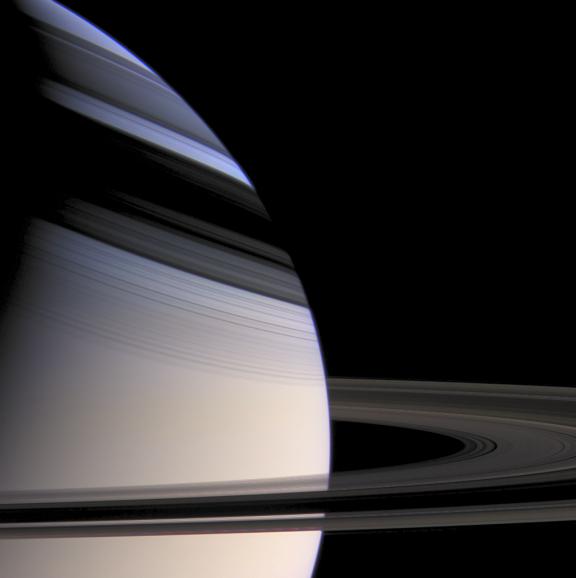
All in all, fantastic news.
Andrew Brown.
#18 Re: Unmanned probes » Phoenix - North Pole Region Lander (PHX) » 2008-04-16 15:58:09
Hi ciclops. Link is below from the MRO HiRISE. PSP_001418_2495.
250 metre wide patch of ground at centre of landing ellipse.
This patch of ground is literally dead centre of the landing ellipse.

Ya Hoo. Cracked it @ long last.
Andrew Brown.
#19 Re: Pictures of Mars » Astronomy from Mars. » 2008-04-16 14:14:14
Hi ciclops, let me try it again. Thank you very much for adding The Spaceport to the links.
Earth as Morning Star, one hour before sunrise from Gusev Crater, MER A Spirit.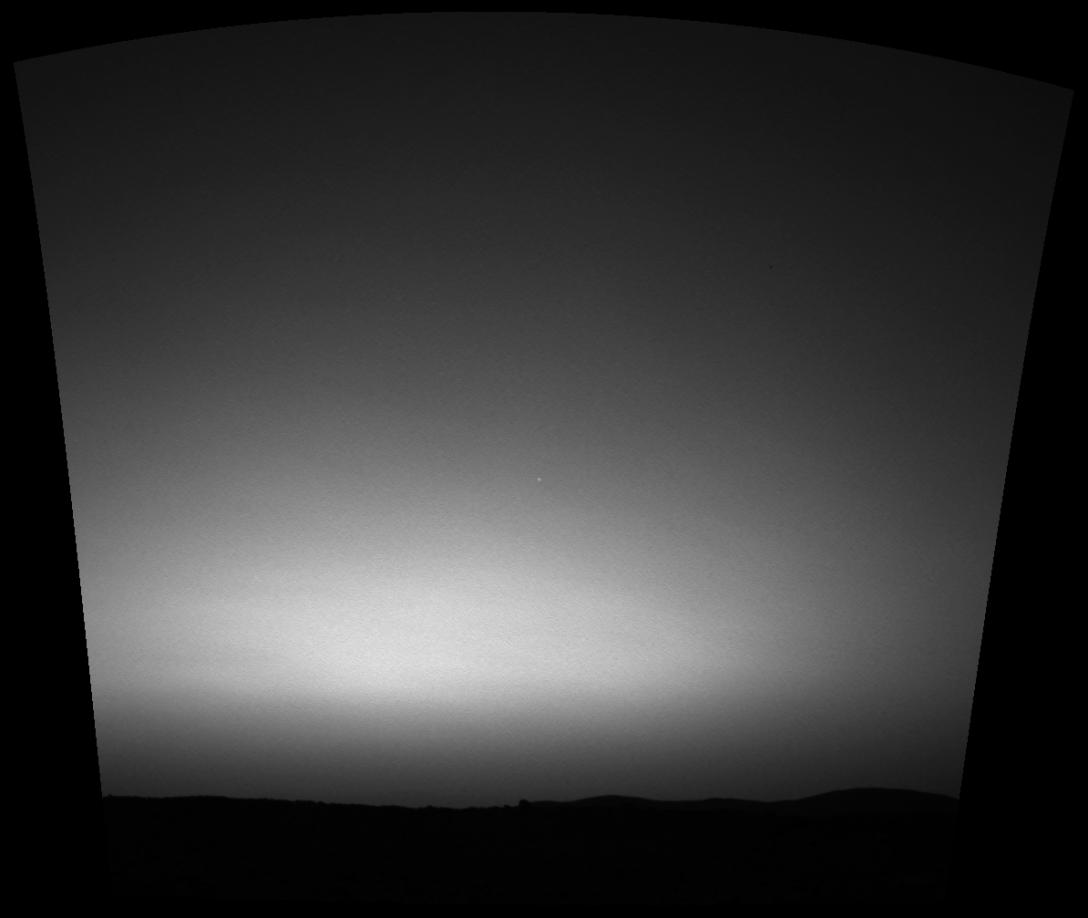
Phobos transiting the Sun, MER B Opportunity Sol 45.
Sol 709, Phobos in front of the Sun. MER B Opportunity.The irregular shape of Phobos is
clearly visible against the Sun. This is the only time as yet, that the entire profile of Phobos has been seen against the Sun. Worth mentioning, from Mars, the Sun on average appears only 20' across, where as from Earth it is approx 30' across & on average 44% as strong as from Earth.
Phobos & Deimos, both in front of Taurus the Bull. MER A Spirit. Familiar constellation, but from the surface of Mars, at times has two different moons.
Sol 696. Phobos seen here against the Hyades in Taurus the Bull by MER A Spirit. The bright star to the left of Phobos is Aldebaran / Alpha Tauri.
Phobos slipping into the shadow of Mars. Sol 675 MER A Spirit.
Phobos & Deimos, north of Sagittarius the Archer, MER A Spirit.
A predawn streak. Viking 2 orbiter or a Cepheid meteor.
1). Could be, the long silent Viking 2 Orbiter. This observation may well be that of the Viking 2 Orbiter catching the morning Sun, whilst close to Periareion. It issuggested that the 'object' moved four degrees in 15 seconds, a close match for the Viking 2 orbiter.
2). Another, possibly more likely explanation is the first ever meteor (shooting star) seen from the surface of the Red Planet.
This could have been part of a meteor shower whose parent body is Comet 114P/Wiseman-Skiff.
Because the radiant is in the constellation Cepheus, this meteor shower could be called the Martian "Cepheids", as the radiant for this suspected Martian Meteor Shower is in Cepheus. The timing is perfect, as this was at the peak of that suspected meteor shower & the direction of the streak, also points towards Cepheus, although of course the image does not reveal the direction of travel of the streak.
So any one's guess, 1 or 2?
A more detailed labled image of the above.
Morning Stars, Earth & Jupiter rise in predawn sky, Meridinai Planum, MER B Opportunity. Earth the brightest object rising in the centre, Jupiter appearing on the left.
Jupiter on: Thursday 11th January 2007 MRO HiRISE. As viewed from Mars, Jupiter was at opposition & the MRO HiRISE obtained this remarkable image from Mars orbit.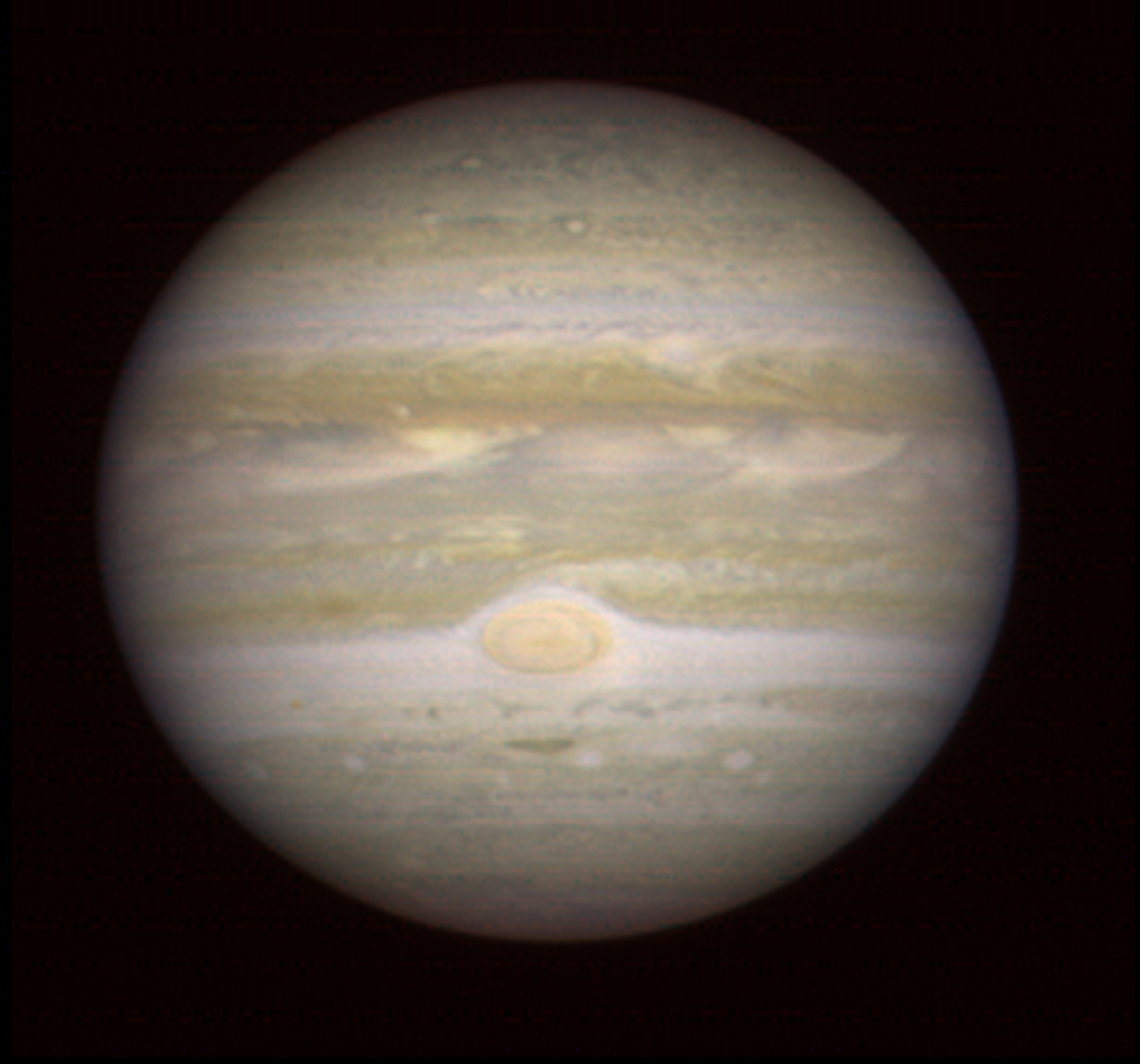
Crescent Earth & Moon on: Wednesday 3rd October 2007, at a range of 142 million kilometers. Imaged by MRO HiRISE from Mars orbit.
Andrew Brown.
#20 Re: Unmanned probes » Phoenix - North Pole Region Lander (PHX) » 2008-04-16 13:41:24
Hi ciclops, I will try again. Thank you for your patience with me. I can see that we will get on absolutely fine.
Yes I would love to see signs of life, though I doubt it very much with this mission (but you never, ever know). My concern if nothing else, it will be too cold.
However, the information to be gained from the trenching & the landscape panorama images, will give a very vivid view of the result of the processes that made that landscape, chemical analysis should determine whether or not there was a marine environment in the very remote past, which may had supported life back then.
Lets try the Phoenix landing site(ish) image again. A 250 metre patch near the very centre of the landing ellipse. A different link this time.
A 250 metre patch near the very centre of the landing ellipse.
Andrew Brown.
#21 Re: Unmanned probes » Phoenix - North Pole Region Lander (PHX) » 2008-04-15 16:13:38
Enlarged image of a 250 metre wide patch of ground, near the centre of the Landing Ellipse.
A really fantastic primary mission.
I really hope that Phoenix makes it past the Martian northern Hemisphere Autumn Equinox, which falls on: Sunday 10th January 2009. After which, there should be the first signs of water & even CO2 frosts. Whether or not Phoenix makes that far is just pure speculation, but lets hope.
The primary mission is awesome. Hopefully the first successful landing in the polar region of another planet (though NEAR / Shoemaker did land near the south pole of Asteroid 433 Eros), hopefully get new insights into the Martian Arctic & history, not to mention, hopefully the first observations of the Martian Midnight Sun (I've already submitted a request of a movie of the Sun swooping low over the northern horizon @ midnight).
This mission is incredible & it annoys me when people moan, saying that it is only landing & digging holes, (landing on Mars is far from routine & is still a very special event) something we have already done with the Viking landers, but my arguement is that Phoenix's mission does not require roving & will still provide a complete new data set, from the surface of Mars in a very different location, to anywhere that we have been before (so far no two landing sites have been alike, all have been different).
Andrew Brown.
#22 Re: Pictures of Mars » Astronomy from Mars. » 2008-04-15 15:49:20
I had already started this on SDC & The Spaceport, generated huge interest.
Cannot seem to post images here, so linked directly to The Spaceport instead. :mrgreen:
Andrew Brown.
#23 Re: Pictures of Mars » Astronomy from Mars. » 2008-04-15 15:48:48
Hi everyone. I am Andrew Brown & some of you may know me from SDC, BAUT & The Spaceport.
Andrew Brown.
Pages: 1
- Index
- » Search
- » Posts by 3488
